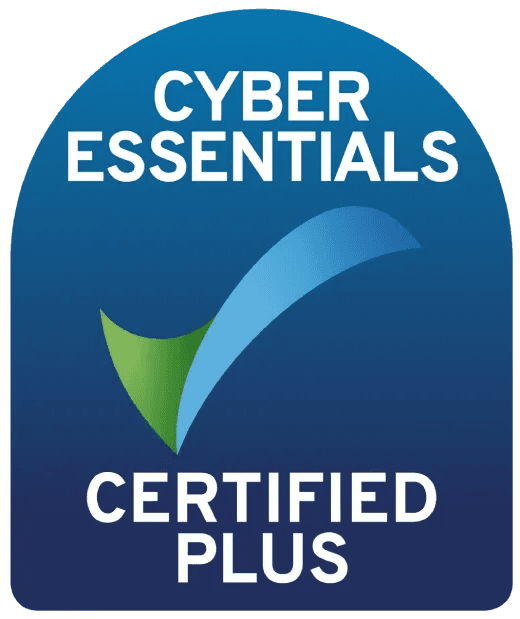Dec 25, 2023
Everything you need to know about VR in e-learning right now

Words by
Kaine Shutler

What is VR?
Virtual reality, or VR, is a simulated experience that replaces the world around us. This is usually achieved by the user wearing a headset which encapsulates their entire vision, allowing them to fully experience a virtual environment around them.
Augmented reality, or AR, is different from VR because it’s usually an overlay that enhances and/or reacts to the living world around us. Users don’t need a headset to experience AR as these overlays require a screen and a camera to operate and can be run on a mobile phone or tablet.
If you’ve touched base with us recently you may have seen our comprehensive guide on the state of VR in e-learning right now written with our guest VR /AR expert Sam Trudgian.
In case you missed it, firstly please go and take a look as it covers a lot of course creation examples we won’t cover here. But if you’re looking for a quick overview of VR in e-learning then keep reading.
Researchers say it works
Researchers have shown that learners using VR retain 30% more information after 2 weeks compared to other e-learning methods. It’s been proven to improve conceptual knowledge overall by 11% and when used in the workplace, inspired 72% of employees to work harder.
It’s still pretty expensive to develop
The skills and time required to build a VR experience means it’s still costly in comparison to creating your course in more traditional forms of e-learning.
Not everyone has a headset
VR is limited in that to deploy training on it would require the user to have their own headset (costing in the region of £300+) or be supplied a headset by the training academy or their employer. Although ownership of VR headsets doubled worldwide between 2019 and 2020, only about 4% of UK households own a VR device.
AR has more business applications
Lots of industries are tapping into AR to help with product demonstrations and visualisations. When you consider that in 2020, 84% of UK adults owned a smartphone, it’s clear why developing AR has become more popular in business. Sharing AR applications is that bit easier and can be used on the go (especially when you consider that 72% of those smartphone users have access to 4G)
...But VR is better for simulations
We covered this at length in our other blog and as you’ll see, there are plenty of applications for VR as a simulator for all kinds of situations. That’s where AR just can’t compete. The immersion you get from VR is unparalleled and the results of its effectiveness as part of e-learning and training are undeniable.
It’s still the future
VR has come a long way in 5 years. Gone are the days of wired headsets and complicated rigs. Headsets are getting smaller, faster and more powerful - and cheaper. While you may see VR as a gaming headset, we’re seeing more and more applications for VR, particularly in training, productivity and connectivity.
Dec 25, 2023
Everything you need to know about VR in e-learning right now

Words by
Kaine Shutler

What is VR?
Virtual reality, or VR, is a simulated experience that replaces the world around us. This is usually achieved by the user wearing a headset which encapsulates their entire vision, allowing them to fully experience a virtual environment around them.
Augmented reality, or AR, is different from VR because it’s usually an overlay that enhances and/or reacts to the living world around us. Users don’t need a headset to experience AR as these overlays require a screen and a camera to operate and can be run on a mobile phone or tablet.
If you’ve touched base with us recently you may have seen our comprehensive guide on the state of VR in e-learning right now written with our guest VR /AR expert Sam Trudgian.
In case you missed it, firstly please go and take a look as it covers a lot of course creation examples we won’t cover here. But if you’re looking for a quick overview of VR in e-learning then keep reading.
Researchers say it works
Researchers have shown that learners using VR retain 30% more information after 2 weeks compared to other e-learning methods. It’s been proven to improve conceptual knowledge overall by 11% and when used in the workplace, inspired 72% of employees to work harder.
It’s still pretty expensive to develop
The skills and time required to build a VR experience means it’s still costly in comparison to creating your course in more traditional forms of e-learning.
Not everyone has a headset
VR is limited in that to deploy training on it would require the user to have their own headset (costing in the region of £300+) or be supplied a headset by the training academy or their employer. Although ownership of VR headsets doubled worldwide between 2019 and 2020, only about 4% of UK households own a VR device.
AR has more business applications
Lots of industries are tapping into AR to help with product demonstrations and visualisations. When you consider that in 2020, 84% of UK adults owned a smartphone, it’s clear why developing AR has become more popular in business. Sharing AR applications is that bit easier and can be used on the go (especially when you consider that 72% of those smartphone users have access to 4G)
...But VR is better for simulations
We covered this at length in our other blog and as you’ll see, there are plenty of applications for VR as a simulator for all kinds of situations. That’s where AR just can’t compete. The immersion you get from VR is unparalleled and the results of its effectiveness as part of e-learning and training are undeniable.
It’s still the future
VR has come a long way in 5 years. Gone are the days of wired headsets and complicated rigs. Headsets are getting smaller, faster and more powerful - and cheaper. While you may see VR as a gaming headset, we’re seeing more and more applications for VR, particularly in training, productivity and connectivity.
Dec 25, 2023
Everything you need to know about VR in e-learning right now

Words by
Kaine Shutler

What is VR?
Virtual reality, or VR, is a simulated experience that replaces the world around us. This is usually achieved by the user wearing a headset which encapsulates their entire vision, allowing them to fully experience a virtual environment around them.
Augmented reality, or AR, is different from VR because it’s usually an overlay that enhances and/or reacts to the living world around us. Users don’t need a headset to experience AR as these overlays require a screen and a camera to operate and can be run on a mobile phone or tablet.
If you’ve touched base with us recently you may have seen our comprehensive guide on the state of VR in e-learning right now written with our guest VR /AR expert Sam Trudgian.
In case you missed it, firstly please go and take a look as it covers a lot of course creation examples we won’t cover here. But if you’re looking for a quick overview of VR in e-learning then keep reading.
Researchers say it works
Researchers have shown that learners using VR retain 30% more information after 2 weeks compared to other e-learning methods. It’s been proven to improve conceptual knowledge overall by 11% and when used in the workplace, inspired 72% of employees to work harder.
It’s still pretty expensive to develop
The skills and time required to build a VR experience means it’s still costly in comparison to creating your course in more traditional forms of e-learning.
Not everyone has a headset
VR is limited in that to deploy training on it would require the user to have their own headset (costing in the region of £300+) or be supplied a headset by the training academy or their employer. Although ownership of VR headsets doubled worldwide between 2019 and 2020, only about 4% of UK households own a VR device.
AR has more business applications
Lots of industries are tapping into AR to help with product demonstrations and visualisations. When you consider that in 2020, 84% of UK adults owned a smartphone, it’s clear why developing AR has become more popular in business. Sharing AR applications is that bit easier and can be used on the go (especially when you consider that 72% of those smartphone users have access to 4G)
...But VR is better for simulations
We covered this at length in our other blog and as you’ll see, there are plenty of applications for VR as a simulator for all kinds of situations. That’s where AR just can’t compete. The immersion you get from VR is unparalleled and the results of its effectiveness as part of e-learning and training are undeniable.
It’s still the future
VR has come a long way in 5 years. Gone are the days of wired headsets and complicated rigs. Headsets are getting smaller, faster and more powerful - and cheaper. While you may see VR as a gaming headset, we’re seeing more and more applications for VR, particularly in training, productivity and connectivity.
Plan your next learning platform with our founder
About Plume
As the leading custom LMS provider serving training businesses in the US, UK and Europe, we help businesses design, build and grow pioneering learning tech that unlocks limitless growth potential.

Plan your next learning platform with our founder
About Plume
As the leading custom LMS provider serving training businesses in the US, UK and Europe, we help businesses design, build and grow pioneering learning tech that unlocks limitless growth potential.

Plan your next learning platform with our founder
About Plume
As the leading custom LMS provider serving training businesses in the US, UK and Europe, we help businesses design, build and grow pioneering learning tech that unlocks limitless growth potential.



